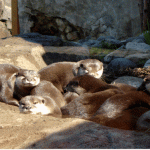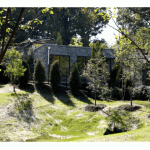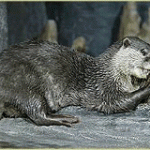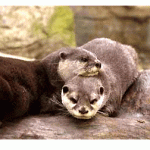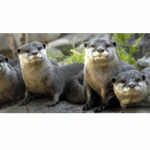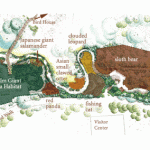
Additional Resources
For more informaton regarding the the Smithsonian National Zoo, please visit their website. Read about Emory Knoll Farms in The Greenroof Directory here. Contact information for design team: Jonathan Penndorf, AIA, LEED AP, Chatelain Architects, p.c., 3516 Connecticut Avenue NW, Washington, DC, 20008; 202.244.0243; jpenndorf@chatelainarchitects.com
The National Zoological Park includes conservation of the natural environment as part of its mission statement, so it is fitting that new animal holding facilities in the Asia Trail complex be topped with green roofs. Three facilities are completely covered by green roof systems on Asia Trail: the Sloth Bear Holding Building, the Otter Holding Building, and Bamboo Storage Shed. The green roofs were included for form and aesthetic. They help to reduce stormwater runoff on the sloped site and add valuable insulation to the buildings. They also help to “camouflage” the buildings so the visitors do not notice them as much when walking the Asia Trail. Asia Trail won the 2006 Presidential Citation for Sustainable Design from the DC Chapter of the American Insitute of Architects. Other sustainable design features include: Solar Hot Water Systems, Naturing Paving Material, Maximizing Daylight, Ipe Wood, Bamboo, Reused, Recycled, and Greener Materials, Energy Star, and Natural Insulation.
The green roof assemblies were designed primarily by the architect (for the roofing system) and the landscape architect (growing medium and plants). The roofing materials installed including Henry roofing products (Henry hot-applied roofing membrane 890-11 and DBR Root Block water retention/root barrier). Atop the hot-applied membrane, 4″ of rigid insulation was installed, then the water retention mat/root barrier, and then the growing medium. Approximately 4″ (100 mm) of planting medium was used for the Otter Holding Building greenroof. Sta-Lite planting medium was specified and approved for use. A mixture of sedums, herbs, and flowers were selected for planting.These otters are the smallest of the world’s 13 otter species. The home range of the Asian small-clawed otters include Indonesia, southern China, southern India, the Philippines, and Southeast Asia. Their habitats are freshwater streams, rivers, and creeks as well as coastal regions, often near dense foliage. Six male small-clawed otters live at Asia Trail. A female small-clawed otter lives at the Small Mammal House.
 Greenroofs.comConnecting the Planet + Living Architecture
Greenroofs.comConnecting the Planet + Living Architecture
